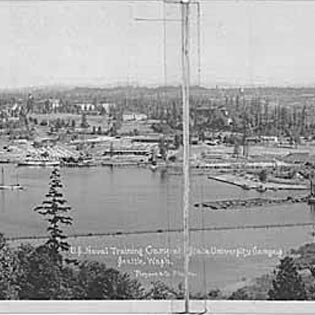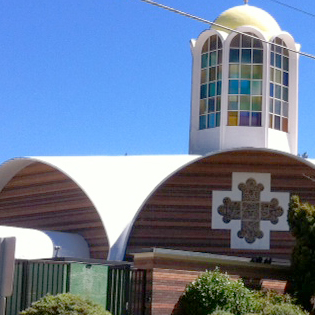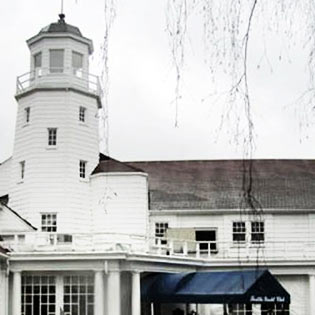RESOURCES
- Montlake.net
- HistoryLink.org essay on NOAA's Northwest Fisheries Science Center
- HistoryLink.org essay on the Montlake neighborhood
- HistoryLink.org essay on the Seattle Yacht Club neighborhood
Links to external websites do not constitute endorsement by WSDOT of the linked websites or the opinions, information, products or services contained therein.
In the early to mid-twentieth century, the Montlake neighborhood found itself in the heart of major engineering and transportation-related developments. The opening of Montlake Cut in 1916 led to radical changes in the neighborhood's shoreline and blocked travel to the north until the Montlake Bridge opened in 1925. As the neighborhood lots were gradually filled in through the years, homes in Montlake developed into an eclectic, varied group. Few areas have the same architectural style. In some areas, developers attempted to bring uniformity to the area, reflected by clusters of a particular architectural style. However, most areas emulate architectural styles as varied as the personalities of their owners since most homes in Montlake were not designed by notable architects, but rather chosen from a pattern book. From mansions to small bungalows, Montlake homes include a variety of styles including Tudor Revival, Craftsman, and Ranch.
The Northwest Fisheries Science Center, part of the National Oceanic and Atmospheric Administration (NOAA), has been a landmark in Seattle's Montlake neighborhood since its original building was completed in 1931. The U.S. Bureau of Fisheries moved its main Pacific research lab from Stanford University to the Northwest that year, in part because the proposed Columbia River dams would require so much study. In 1964, the Montlake Laboratory tripled in size with the addition of two new buildings. In 1970, it was placed under a new agency, NOAA, and in 1971, the Montlake Laboratory acquired a new name: the Northwest and Alaska Fisheries Center, which changed in 1988 to Northwest Fisheries Science Center. Today, the center employs 500 people and researches issues including fisheries management, oil spills, marine mammals, and, as always, salmon recovery.
Visit HistoryLink.org to learn more about theNOAA's Northwest Fisheries Science Center.
In 1940, the streetcar line that ran through that Montlake neighborhood was abandoned. In the second half of the twentieth century, Montlake residents fought challenges to their neighborhood cohesiveness. One major change was the construction of SR 520. Although they were not able to stop its construction, the Montlake community did successfully ward off plans to widen the bridge over the Montlake Cut, to remove the center strips of Montlake Boulevard East, and the completion of the R.H. Thomson Expressway, which would have cut through the Arboretum.
Visit HistoryLink.org to learn more about theMontlake neighborhood.
The Seattle Yacht Club, at 1807 E. Hamlin Street on Portage Bay in the Montlake neighborhood, has been a Seattle institution for well more than a century. First founded in 1879, its existence was somewhat tenuous and sporadic until 1892, when the direct predecessor of today's club was formed. Since merging with the Elliott Bay Yacht Club in 1909, the Seattle Yacht Club has weathered good times and bad, wars and the Great Depression, and huge societal changes. It has made its home in Montlake since it moved to its clubhouse on Hamlin Street in 1920.
Visit HistoryLink.org toread more about the Montlake Community and the Seattle Yacht Club.



